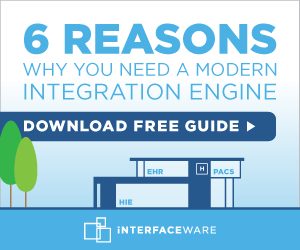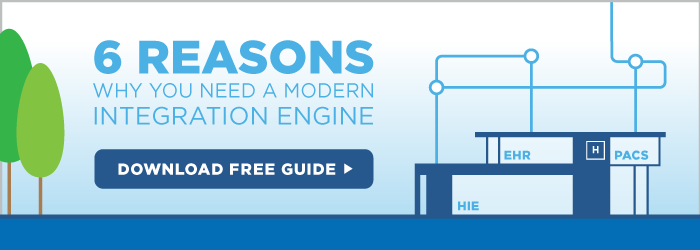What’s the difference between integration and creating interfaces?
Interfacing or integration: it’s like saying perusing or leafing through, right? They’re synonyms, right?
Wrong.
While both interfacing and integration allow for data to get passed along from one place to another, how this all happens differs a lot. It’s a similar thing for the words perusing and leafing — on the surface they appear to denote the same thing, but one of these words means reading through carefully (to peruse) while one means lightly reading (to leaf through).
As simple as it seems, changing that one word can have a huge impact on both your outlook and the ROI you’ll see from your upcoming Health IT projects.
Let’s examine the difference:
 Interfacing is often a temporary, band-aid solution that’s used to connect two systems together so that data can be easily exchanged. The applications that need connecting are unaffected, and they know how to send and receive data while continuing to act independently of each other. It’s a point-to-point connection that’s used to “just get the job done”.
Interfacing is often a temporary, band-aid solution that’s used to connect two systems together so that data can be easily exchanged. The applications that need connecting are unaffected, and they know how to send and receive data while continuing to act independently of each other. It’s a point-to-point connection that’s used to “just get the job done”.
One advantage of interfacing is that it’s easy; just connect two things so that they can talk with one another. However, one big downside to this is that data is maintained in different systems, so it needs more administration. It also means that data interchange failure is high. Boo. Who needs that headache?
Integration on the other hand is a more complex arrangement where the object and architecture are connected with each other. Disparate subsystems are unified, meaning that data, reporting and workflows are combined and can be accessed from a single common place. Integration is looking at the big picture and figuring out a way to best architect your IT systems. It’s about creating a strategy where each new application you connect, like a new EMR, exponentially increases the value not just of one other application, but of all the other applications in your integrated environment.
Another huge advantage of integration is that it allows you to be future-ready. When your system is designed in a way to handle scalability and growth, you won’t have a patchwork of poorly connected applications to make sense of. Instead, you’ll have architected one that can handle any new device/application.
So before you decide on connecting one thing to another, stop and think, is it really integration that you’re looking for?

